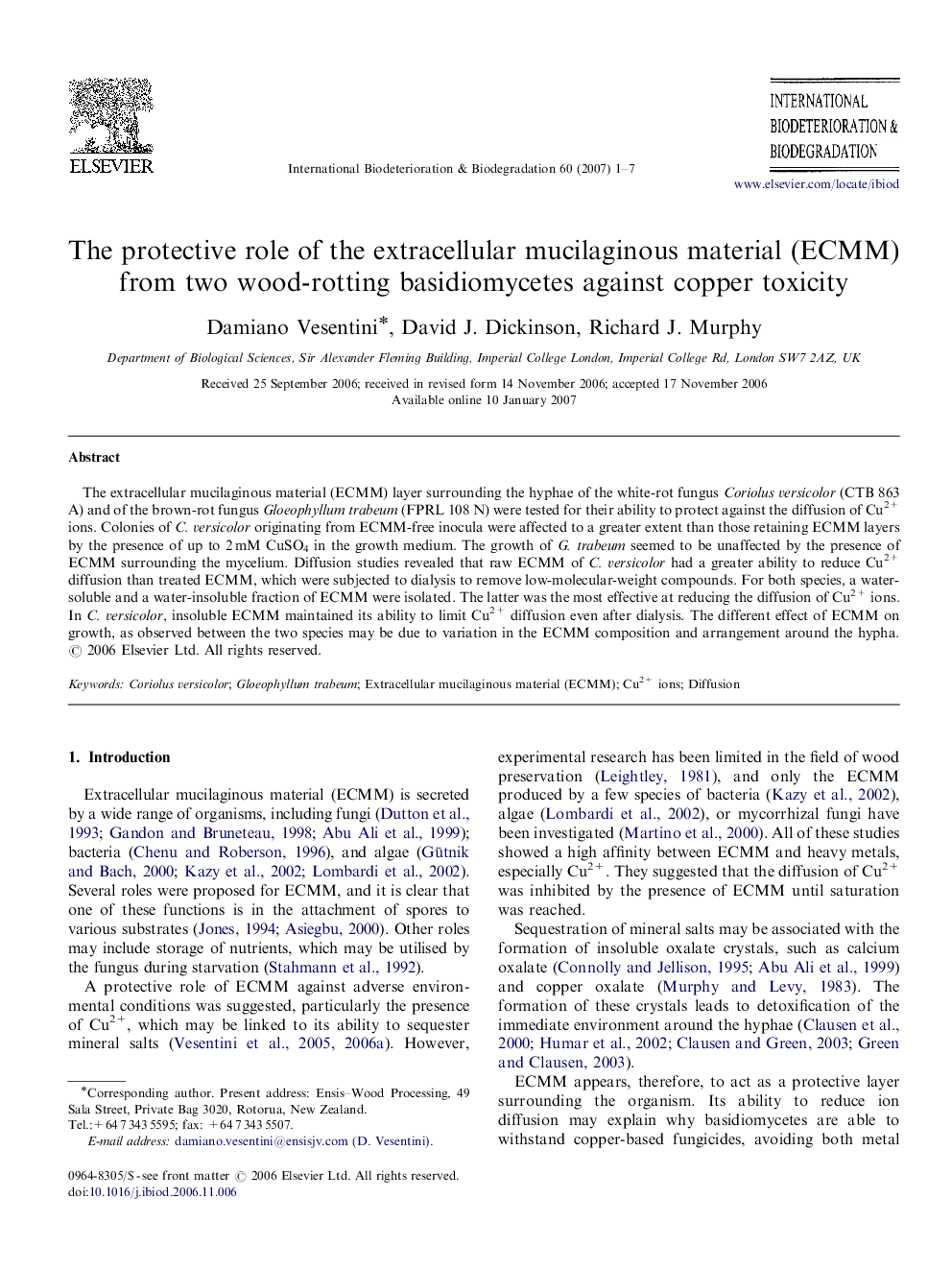| Article ID | Journal | Published Year | Pages | File Type |
|---|---|---|---|---|
| 4365984 | International Biodeterioration & Biodegradation | 2007 | 7 Pages |
Abstract
The extracellular mucilaginous material (ECMM) layer surrounding the hyphae of the white-rot fungus Coriolus versicolor (CTB 863 A) and of the brown-rot fungus Gloeophyllum trabeum (FPRL 108 N) were tested for their ability to protect against the diffusion of Cu2+ ions. Colonies of C. versicolor originating from ECMM-free inocula were affected to a greater extent than those retaining ECMM layers by the presence of up to 2Â mM CuSO4 in the growth medium. The growth of G. trabeum seemed to be unaffected by the presence of ECMM surrounding the mycelium. Diffusion studies revealed that raw ECMM of C. versicolor had a greater ability to reduce Cu2+ diffusion than treated ECMM, which were subjected to dialysis to remove low-molecular-weight compounds. For both species, a water-soluble and a water-insoluble fraction of ECMM were isolated. The latter was the most effective at reducing the diffusion of Cu2+ ions. In C. versicolor, insoluble ECMM maintained its ability to limit Cu2+ diffusion even after dialysis. The different effect of ECMM on growth, as observed between the two species may be due to variation in the ECMM composition and arrangement around the hypha.
Related Topics
Life Sciences
Environmental Science
Environmental Science (General)
Authors
Damiano Vesentini, David J. Dickinson, Richard J. Murphy,
